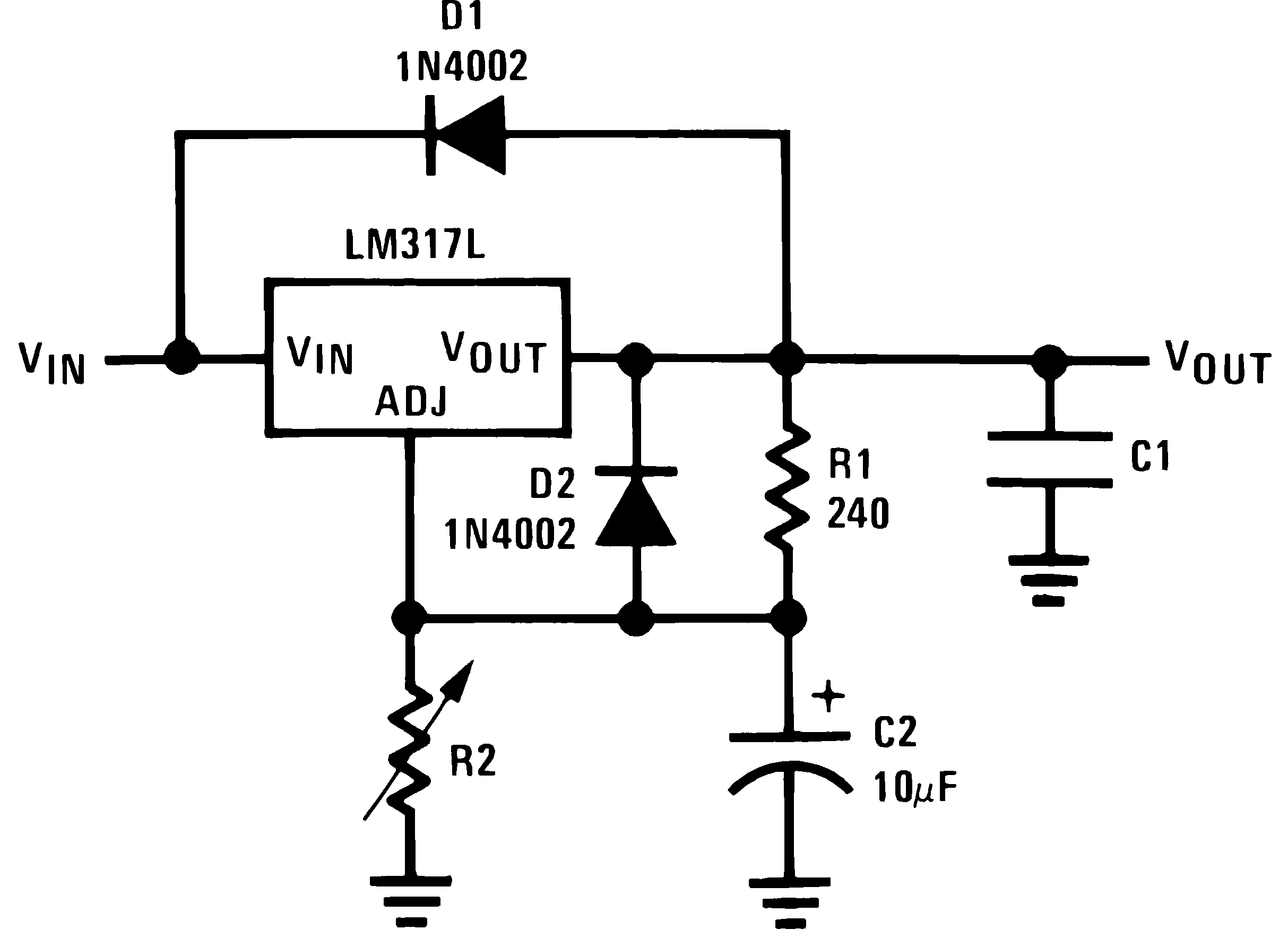SNVS775L March 2000 – January 2018 LM317L-N
PRODUCTION DATA.
- 1 Features
- 2 Applications
- 3 Description
- 4 Revision History
- 5 Pin Configuration and Functions
- 6 Specifications
- 7 Detailed Description
-
8 Application and Implementation
- 8.1 Application Information
- 8.2
Typical Applications
- 8.2.1 1.25-V to 25-V Adjustable Regulator
- 8.2.2 Digitally-Selected Outputs
- 8.2.3 High Gain Amplifier
- 8.2.4 Adjustable Current Limiter
- 8.2.5 Precision Current Limiter
- 8.2.6 Slow Turnon 15-V Regulator
- 8.2.7 Adjustable Regulator With Improved Ripple Rejection
- 8.2.8 High Stability 10-V Regulator
- 8.2.9 Adjustable Regulator With Current Limiter
- 8.2.10 0-V to 30-V Regulator
- 8.2.11 Regulator With 15-mA Short-Circuit Current
- 8.2.12 Power Follower
- 8.2.13 Adjusting Multiple On-Card Regulators With Single Control
- 8.2.14 100-mA Current Regulator
- 8.2.15 1.2-V to 12-V Regulator With Minimum Program Current
- 8.2.16 50-mA Constant Current Battery Charger for Nickel-Cadmium Batteries
- 8.2.17 5-V Logic Regulator With Electronic Shutdown
- 8.2.18 Current-Limited 6-V Charger
- 8.2.19 Short Circuit-Protected 80-V Supply
- 8.2.20 Basic High-Voltage Regulator
- 8.2.21 Precision High-Voltage Regulator
- 8.2.22 Tracking Regulator
- 8.2.23 Regulator With Trimmable Output Voltage
- 8.2.24 Precision Reference With Short-Circuit Proof Output
- 8.2.25 Fully-Protected (Bulletproof) Lamp Driver
- 8.2.26 Lamp Flasher
- 9 Power Supply Recommendations
- 10Layout
- 11Device and Documentation Support
- 12Mechanical, Packaging, and Orderable Information
Package Options
Mechanical Data (Package|Pins)
Thermal pad, mechanical data (Package|Pins)
Orderable Information
7.4.2 Protection Diodes
When external capacitors are used with any IC regulator it is sometimes necessary to add protection diodes to prevent the capacitors from discharging through low current points into the regulator. Most 10-μF capacitors have low enough internal series resistance to deliver 20-A spikes when shorted. Although the surge is short, there is enough energy to damage parts of the IC.
When an output capacitor is connected to a regulator and the input is shorted, the output capacitor will discharge into the output of the regulator. The discharge current depends on the value of the capacitor, the output voltage of the regulator, and the rate of decrease of VIN. In the LM317L-N, this discharge path is through a large junction that is able to sustain a 2-A surge with no problem. This is not true of other types of positive regulators. For output capacitors of 25 μF or less, the ballast resistors and output structure of the LM317L-N limit the peak current to a low enough level so that there is no need to use a protection diode.
The bypass capacitor on the adjustment terminal can discharge through a low current junction. Discharge occurs when either the input or output is shorted. Internal to the LM317L-N is a 50-Ω resistor which limits the peak discharge current. No protection is needed for output voltages of 25 V or less and 10-μF capacitance. Figure 15 shows an LM317L-N with protection diodes included for use with outputs greater than 25 V and high values of output capacitance.


D1 protects against C1
D2 protects against C2